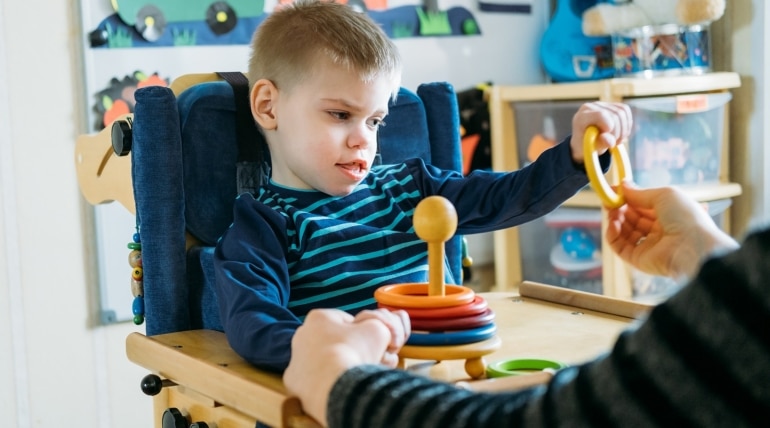There’s something special about a therapy dog. They provide comfort and companionship to those in hospitals, nursing homes, schools, and other settings. But what exactly makes a therapy dog? Therapy dogs are usually calm, gentle, and well-behaved.
They must be comfortable around people of all ages and abilities, including those who may be excited or unhappy.
Most therapy dogs are trained by professional organizations, such as Therapy Dogs International or the Delta Society where they learn obedience, socialization skills and how to behave.
With that in mind, it can be convincing to acknowledge that therapy dogs could help solve some of the challenges faced by kids with autism, such as anxiety, depression, and social isolation.
We know that many kids with ASD have difficulty interacting with other people and maybe shy or withdrawn, so that a therapy dog could provide some much-needed companionship.
But there’s little evidence that therapy dogs help kids with ASD. According to research conducted by Keicher, an applied behavior analyst at the University of Missouri Thompson Center for Autism & Neurodevelopmental Disorders, autistic boys between the age of 4-9 were asked to accomplish a list of tasks, and those who completed the tasks were given a therapy dog to play with.
The study found that although some boys given the therapy dog did show some enjoyment and were more likely to complete the tasks, others appeared utterly uninterested in the dog and even seemed agitated by its presence. In contrast, others were indifferent to the dig and continued playing with toys.
Keicher points out that every child is unique and will respond differently to animals. Just because a therapy dog may help one child with ASD doesn’t mean it will have the same effect on another.
According to a study published in Behavior Analysis in Practice, it’s necessary to identify the child’s preferences before investing in a therapy dog.
Some children with ASD may be afraid of dogs or have other fears and anxiety that could be triggered by having a therapy dog in the room. Others may be allergic to dogs and could react to being close to one.
Identifying what the child is interested in and whether or not they would enjoy having a therapy dog present is an essential first step. If the child does show an interest in dogs, then it may be worth considering a therapy dog as a possible intervention.
However, it’s important to remember that therapeutic interventions should be research-based and have evidence to support their efficacy. There’s currently no evidence that therapy dogs help kids with ASD, so it’s essential to proceed cautiously.
Keicher says, “Applied behavioral analysis is currently the treatment for autism backed by scientific research.” ABA focuses on teaching specific skills and behaviors through scientific methods and has been proven effective treatment for ASD.
If you’re considering a therapy dog as a possible intervention for your child with ASD, consult with a professional first to see if it’s the right fit. That way, you can ensure that your child gets the best possible care.




